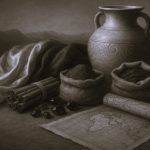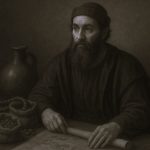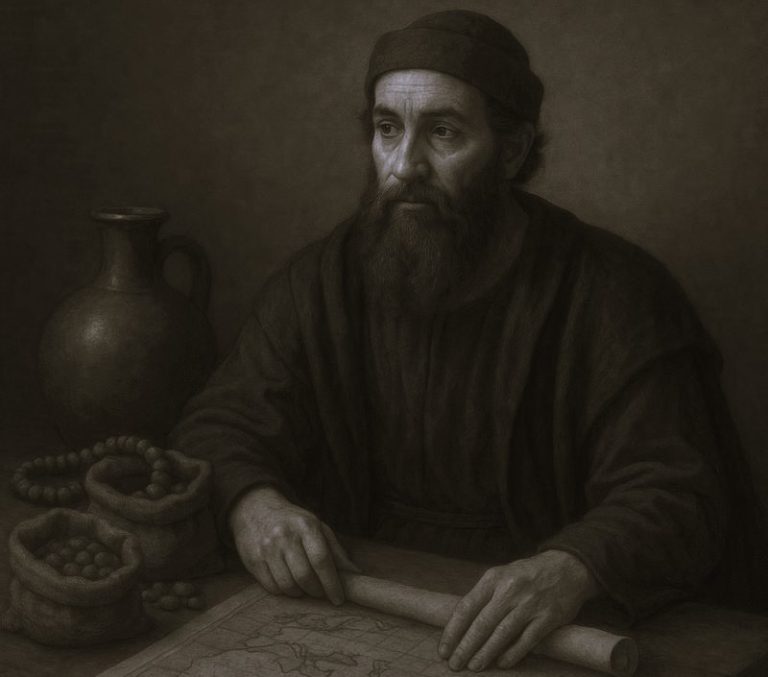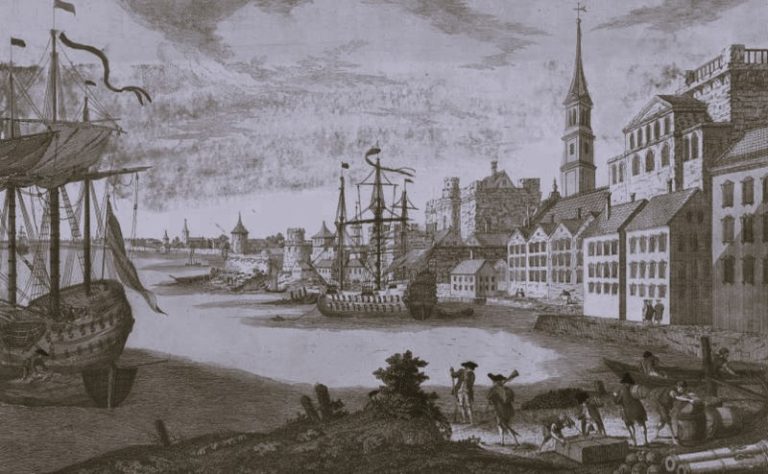
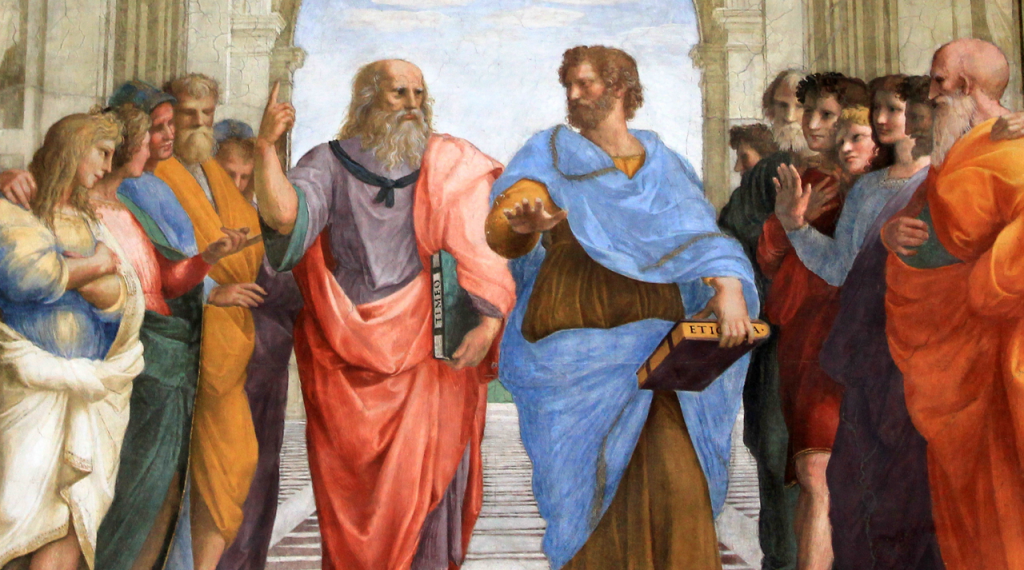
Knowledge

Medieval people understood the world as a place of mystery, even enchantment – a book written by God.
The medieval world was full of marvels as revealed through medieval sources. He unearths records of strange sightings of fish men caught off the coast of Suffolk, or green men in Essex. Traveling to Hereford Cathedral he decodes the Mappa Mundi, with its three continents (Europe, Africa and Asia) and its strange beasts thought to exist on the periphery of the earth: hermaphrodites, unicorns, men with the heads of dogs.
Medieval science was not nonsense: it was known that the world was round, for example. But for medieval person it was possible to attribute both a natural and a divine cause to a single event – an eclipse could be caused by the movement of the planets and be a sign from God.
For hundreds of years, learning remained (almost literally) in the hands of monks and how the monopoly was challenged with the discovery of the classical learning of Aristotle, and of Arabic science, in the great libraries of Spain, seized by Christian soldiers in the 11th and 12th centuries.
Though theologians like Thomas Aquinas worked hard to reconcile classical learning with Christian teaching, scientists such as Roger Bacon pushed back the frontiers of knowledge in favour of a more evidence-based analysis of the world.
Marco Polo and other travellers returned with amazing tales of the East, signalling the beginning of the end for the established medieval world view. They found not dog-heads but great civilisations.
When Columbus sailed off to find a new route to the East he was helped by all the new technology of the time – better sailing ships, gunpowder, compasses. As the Middle Ages grew to a close, the world had become a place not to be contemplated, but mastered, even exploited.
Sex

There is remarkable evidence of the complex passions of medieval men and women.
On the one hand, there was a down-to-earth approach you might expect in a peasant society; on the other was an obsessive abhorrence of desire grounded in religious fervour. Professor Robert Bartlett explores the subject using medieval sources, and quotes some of the questions the 11th century Church recommended priests to ask their parishioners: “Have you committed fornication with your step-mother, your sister-in-law, your son’s fiancée, your mother?”
Medieval knowledge about sexual difference was rudimentary and governed by a misogyny rooted in the Bible. Eve was the cause of original sin for tempting Adam in the Garden of Eden. An early church father had this to say to women: “The curse God pronounced on your sex weighs still upon the world. You are guilty – you must bear its hardships. You are the Devil’s gateway”.
The Church preached hatred of the flesh and promoted the cult of virginity. There is the compelling story of Christina of Markyate who defied her parents and her husband to maintain her chastity.
And yet it was the medieval world that gave birth to the modern concept of romantic love. 12th century troubadours began to sing songs of love to women who were to be adored. For the upper classes at least, the rules of love were reinvented in lengthy treatises, the heroes and heroines of love celebrated in poems: Lancelot and Guinevere, Tristan and Iseult.
There is the tragic story of the real life lovers Abelard and Héloise – Abelard the great scholar, Héloise the niece of a canon at the Cathedral of Notre Dame. Their love letters from the 12th century are astonishing in their frankness, passion and willingness to break conventions.
Belief

We belief in the supernatural. The medieval dead shared the world with the living: encounters with the dead and visions of the next world ensured a two-way traffic between this world and the next.
The cult of the saints was part of the medieval preoccupation with death. The holy dead were active in their intercession for the living, and their relics were prized. You can explore this preoccupation through one of the few medieval relics in Britain, the skull of St Simon Stock at Aylesford Priory.
The Church governed the lives of the faithful through its teachings and in the sacraments.
From the 11th Century, the church became increasingly hostile towards outsiders, exemplified in the First Crusade and the so-called Muslim ‘infidels’. Closer to home, the Jewish community comes under scrutiny, culminating in the massacre at York in 1190, while a growing number of reformers such as John Wycliff and the Lollards face persecution as a threat to the established belief of the Church.
Power

The framework of the medieval class system was brutal. Inequality was as part of the natural order, the life of serfs little better than those of animals, the knight’s code of chivalry more one of caste solidarity than morality. The class you were born into determined who you were.
There were three classes, or estates: those who pray (the clergy), those who fight (the aristocratic warrior class of knights) and those who work (everybody else – in practice, usually serfs on a knight’s estate).
There were stiff penalties to be paid by serfs who ran away, and harsh laws protected the hunting rights of the king in the vast forests of medieval Britain.
Medieval lords were not so much landlords as warriors. Their land was given to them by the king precisely because they were warriors and supported him in military campaigns. Fighting was in their blue blood.
These knights followed the international codes of chivalry – a word today synonymous with gallantry and noble behaviour. Knights could behave nobly, but it was generally towards their own class.
To hold such a violent society together was no easy task. It would need divine help. That is just what medieval kings had – at the ceremony of the Coronation the new monarch was anointed with holy oil, signifying his divinely sanctioned right to rule.
But this rigid order was fatally undermined by the Black Death, creating a labour shortage which resulted in the serf achieving higher wages and geographical mobility. At Blackheath and at the Tower of London learn how the drama of the Peasants’ Revolt unfolded, when the despised third estate – those who work – began to taste a new freedom.
Originally published by The Open University, 04.16.2012, under the terms of a Creative Commons Attribution-NonCommercial-ShareAlike 4.0 International license.
